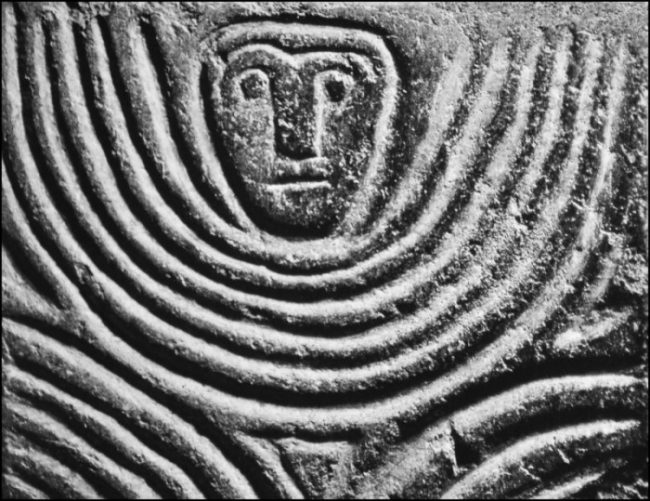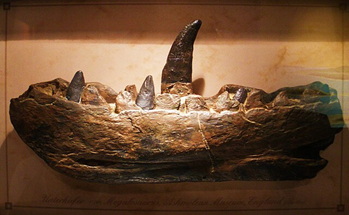The legend and legacy of the city’s saint
Frideswide is a legendary figure with a strong legacy in and around Oxford. From church leader to miracle worker, Frideswide even inspired the foundation of Christ Church College and its Cathedral. Oxford is her legacy, and we continue to celebrate her, as patron saint of the city and the university. Oxfordshire Day, also known as St Frideswide’s Day, commemorates her death on the 19th October every year.
Frideswide begins the story of Oxford, as she established the first church here during the second half of the 7th century. When her church was destroyed in the St Brice’s Day massacre, a priory was built in its place and dedicated to her as St Fridewide’s Priory. St Fridewide’s Priory provided the central element around which Cardinal Wolsey (chief advisor to Henry VIII) founded a new college in Oxford, the college that would become Christ Church. In an even more ambitious plan for the site, Henry VIII turned St Frideswide’s Priory into Oxford’s Cathedral as part of Christ Church College in 1546. Today, Christ Church Cathedral stands at the site of Frideswide’s Anglo-Saxon church, where her shrine remains and is the oldest monument the cathedral has to offer.
Frideswide’s legend tells of her ability to invoke the help of God and to perform miracles. In one famous tale, she journeyed to escape a Saxon prince who wanted to marry her. After she rejected him, he continued to pursue her and so she fled. With God’s help she took refuge in Oxford “by means of hidden ways” according to William of Malmesbury’s account written in 1125. As Frideswide’s pursuer passed through the town gates, he is said to have been struck blind, but “Understanding the wrongfulness of his persistence, he placated Frideswide by means of messengers and recovered his sight as quickly as he had lost it”. In fuller versions of the legend, Frideswide is said to have travelled to Bampton and Binsey. Whilst at Binsey, Frideswide brought forth a spring of healing water. Known locally as Treacle Well, it is said to heal those who drink from it or who pray there. The well still stands in the grounds of Binsey’s St Margaret’s Church and is dedicated to St Frideswide.

The slab dates to between 900 and 1099 and was found at Christ Church Cathedral during restorations in 1869.
Along with many tales of Frideswide’s healing miracles, she is said to have returned the sight of a blind girl and kissed a man suffering with leprosy, who was healed immediately. The legend and legacy of Frideswide continued after her death in 735 and her cult became evermore popular in the 12th century, when a shrine was dedicated to her at the newly built St Frideswide’s Priory. During this period, her shrine became a site of pilgrimage and prayer as Frideswide’s miracles continued to heal the sick. In 1518, still something of a local legend, Frideswide’s shrine was visited by Catherine of Aragon. Catherine was accompanied by Cardinal Wolsey and attended Frideswide’s shrine to pray for the birth of a healthy son and heir to the English throne.
After her death, Frideswide’s body was buried in the floor of her Saxon church. In 1180 her remains were exhumed and placed on a shrine at the same site, inside the newly built St Frideswide’s Priory, now Christ Church Cathedral. Whilst Frideswide’s shrine would eventually be destroyed along with all others in England at the time of the Reformation in 1538, part of her shrine remains and can still be seen at the Cathedral.
The exact location of Frideswide’s remains is something of a mystery. Her relics went missing when her shrine was destroyed in the Reformation, only to reappear 23 years later during the burial of a protestant woman, Catherine Martyr. Catherine’s body was exhumed only a year after it was buried, when Mary Tudor, Bloody Mary became Queen, and attempted to restore Roman Catholicism to England. Catherine’s remains were relegated to a dunghill due to her protestant status. During this process, Frideswide’s remains were found and apparently set aside.
Ten years later, when the protestant Queen Elizabeth I came to the throne, Catherine Martyr’s remains were ordered to be retrieved from the dunghill and reburied within the Cathedral. Due to the tumultuous times of religious conflict since the English Reformation, the cleric ordered with the task decided to mix up the bones of Catherine, the protestant woman and Frideswide, the Catholic Saint, presumably in order to prevent any further tampering or exhuming of their remains on religious grounds. Frideswide’s and Catherine’s remains were mixed together and buried in the floor of the Cathedral in an unmarked spot where they remain to this day.
St Frideswide persists as a legendary figure in Oxford more than 1200 years on. She was invoked in Chaucer’s The Miller’s Tale and her miraculous ’Treacle Well’ also makes an appearance in Lewis Carroll’s Alice’s Adventures in Wonderland. She is remembered in the names of St Frideswide’s Square and St Frideswide’s School as well as in St Frideswide’s Window at the Cathedral which tells the story of her life, with her reconstructed shrine just below it. We look forward to celebrating her legend and legacy this year, as every year, on 19th October.
Written by volunteer Laura Lys – creator of the Riot Room, a space dedicated to the promotion of women and women-centred culture.
Want to write your own Oxford-inspired post? Sign up as a volunteer blogger.


